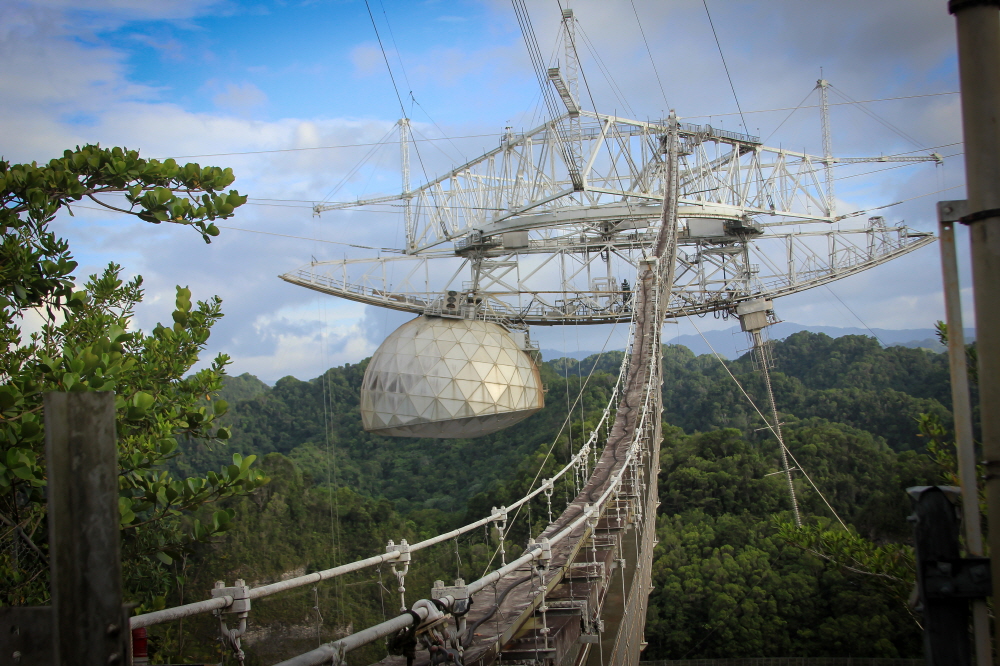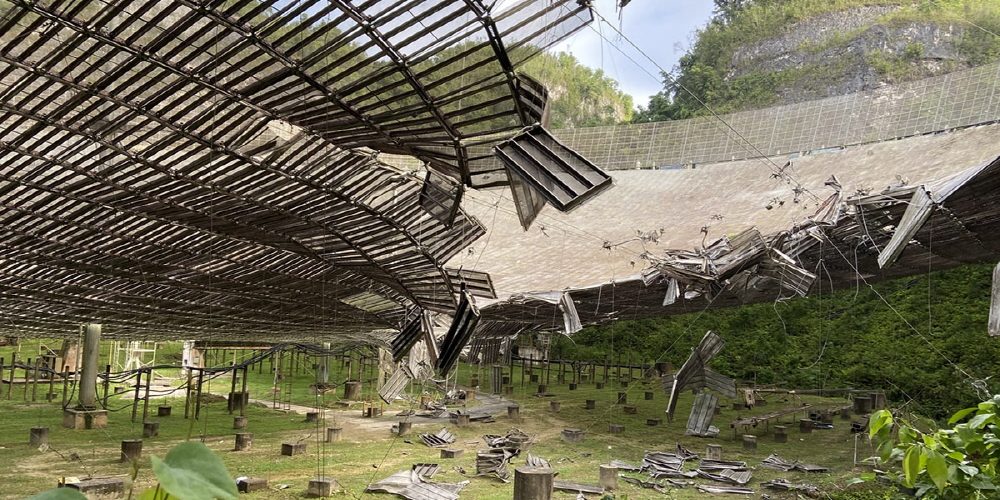
The radio telescope, located at the Arecibo Observatory in Puerto Rico, is the world’s largest radio telescope with a reflecting surface of 305 m in diameter and has long played an important role in astronomy research. However, as the radio telescope was built in 1963, it was deteriorated, and two major accidents occurred only between August and November 2020, and the National Science Foundation NSF decided to dismantle the radio telescope.
The Arrecibo Observatory has been used in various extraterrestrial exploration projects, including the transmission of the Arrecibo message, the first radio signal targeting extraterrestrial life, and has been used as a stage for games and movies. The world’s largest radio telescope, boasting of the Arrecibo Observatory, was swept away in situations such as budget cuts and damage caused by a direct hurricane in the 21st century, but was operated as an active radio telescope by 2020.
However, on August 10, 2020, the steel auxiliary cable supporting the auxiliary mirror of the radio telescope was broken, and an accident occurred in which the main mirror reflective surface was hit. The reflective surface, which is an important part of the radio telescope, was broken over 30m, resulting in a temporary shutdown.
The accident repair work was scheduled to take place in December 2020. However, on November 6, just three months after the accident, an accident occurred again in the radio telescope. This time, the main cable supporting the auxiliary mirror was damaged and fell, and the reflective surface and other cables were damaged.
The Arrecibo Observatory applied for a subsidy from NSF to push for a restart plan, but after a review by NSF with several engineering firms, it discovered that there was a risk to the work of the radio telescope repair facility, and NSF eventually abandoned the repair of the radio telescope, which had been used for 57 years. Announced that it will be dismantled.
In addition to the serious deterioration of the radio telescope and it has already expired, there is a risk that the radio telescope structure may not be supported because the cable continues to be exposed to disasters such as typhoons and severe weather. In the worst case, it is possible that the hanging mirrors collide with the reflective surface, or the tower supporting the auxiliary mirrors collapses and damages the surrounding buildings.
Regarding the decision to release the radio telescope, NSF said the decision was unfortunately necessary as it prioritizes the safety of workers, observatory staff and visitors, and the engineer advised to destroy the radio telescope sooner or later, and said the radio telescope was at risk of unexpected collapse of control .
In the next few weeks, plans to release radio telescopes will be established and will be put into action after ensuring the safety of the surroundings. In addition, not all facilities of the Arrecibo Observatory will be dismantled, and buildings such as observation facilities and visitor centers will remain in addition to the radio telescope, and the data collected by the radio telescope will be analyzed for the time being. Related information can be found here .


















Add comment